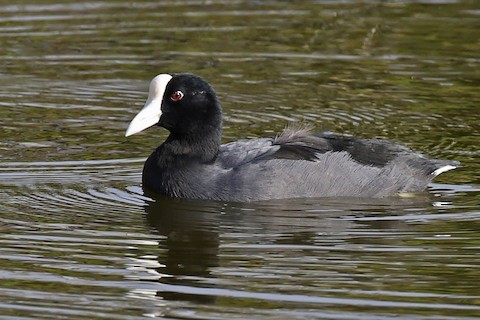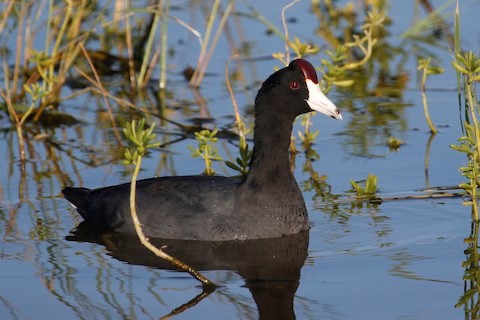Birdfinding.info ⇒ Hawaii’s endemic coot is not numerous but it is locally common and conspicuous when present in sheltered waters of all the main islands, especially on Oahu and Kauai. Sites where it can often be found include: on Oahu, the Kawainui area and James Campbell and Pearl Harbor National Wildlife Refuges; on Kauai, Hanalei National Wildlife Refuge, Kauai Lagoons, and Kawaiele Waterbird Sanctuary; on Maui, Kanaha Pond and Kealia Pond National Wildlife Refuge; and on the Big Island, Aimakapa Pond, Kealakehe, and Waiakea Pond. Considering its history of wandering to the Northwest Chain, it seems likely that it occasionally strays undetected to Asia and the Americas.
Hawaiian Coot
Fulica alai
Endemic to Hawaii, and resident in the lowlands of all major islands, where it occurs in various types of waterbodies, and breeds in ponds with emergent vegetation.
Somewhat prone to wandering: there are numerous records of vagrants having reached various islands of the Northwest Chain west to Kure. Most of these records have occurred between June and August in years when significant inter-island irruptions were noted within its normal range.
Identification
A typical coot, but adults of both sexes have an exaggerated, bulbous frontal shield.
There are two color morphs: pale-shielded and red-shielded. On red-shielded birds, the dome or bulb portion of the shield is maroon (the color of dried blood), and they usually have dark spots near the tip of the bill.
The plumage is almost entirely blackish, shading to jet-black on the neck and head. The undertail coverts are narrowly fringed with white—though this is often difficult to see under field conditions.

Hawaiian Coot, red-shielded. (Ohiki Road, Hanalei National Wildlife Refuge, Kauai, Hawaii; February 15, 2016.) © Nate Brown

Hawaiian Coot, pale-shielded, showing grayish legs with very large feet. (Hanalei National Wildlife Refuge, Kauai, Hawaii; April 15, 2016.) © Dave DeReamus

Hawaiian Coot, pale-shielded. (Ohiki Road, Hanalei National Wildlife Refuge, Kauai, Hawaii; February 27, 2019.) © Joachim Bertrands
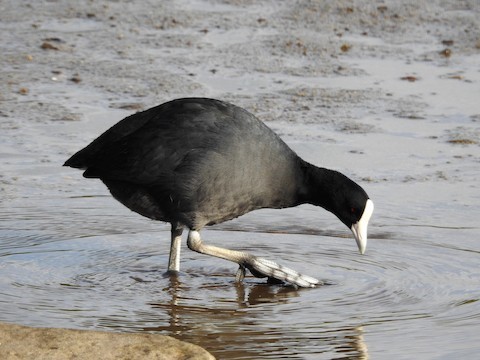
Hawaiian Coot, pale-shielded. (Kealia Pond National Wildlife Refuge, Maui, Hawaii; March 10, 2019.) © Ellen Horak
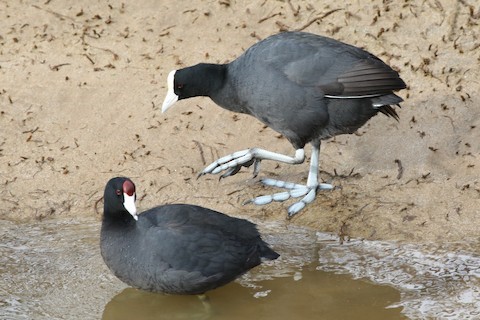
Hawaiian Coots, red-shielded and pale-shielded. (Kealia Pond National Wildlife Refuge, Maui, Hawaii; February 15, 2017.) © Margaret Viens

Hawaiian Coot, pale-shielded. (Ohiki Road, Hanalei National Wildlife Refuge, Kauai, Hawaii; December 28, 2015.) © Carl Giometti

Hawaiian Coot, red-shielded. (Kealia Pond National Wildlife Refuge, Maui, Hawaii; November 19, 2007.) © Jerome Jourdan

Hawaiian Coot, pale-shielded. (Kealia Pond National Wildlife Refuge, Maui, Hawaii; October 18, 2019.) © Doug Hommert

Hawaiian Coot, pale-shielded. (Ka’elepulu Wetland, Kailua, Oahu, Hawaii; May 11, 2018.) © T. Norris
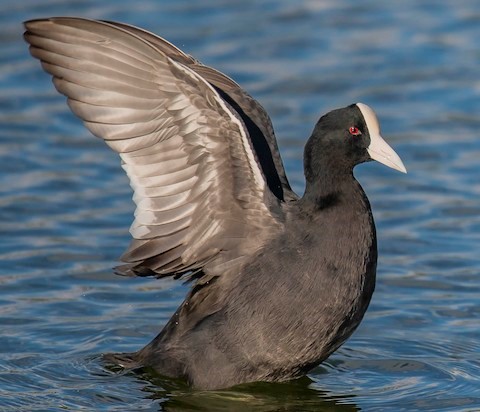
Hawaiian Coot, pale-shielded, showing pale-gray underwings. (Aimakapa Pond, Kaloko-Honokohau National Historical Park, Big Island, Hawaii; December 6, 2019.) © William Richards

Hawaiian Coot, red-shielded, showing white fringe on undertail coverts. (Aimakapa Pond, Kaloko-Honokohau National Historical Park, Big Island, Hawaii; July 6, 2017.) © Ryan McDaniel
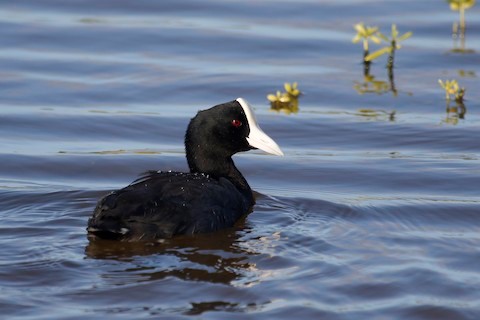
Hawaiian Coot, pale-shielded—note that white in undertail coverts is detectable but very inconspicuous. (Kanaha Pond Wildlife Sanctuary, Maui, Hawaii; December 27, 2015.) © Donna Pomeroy
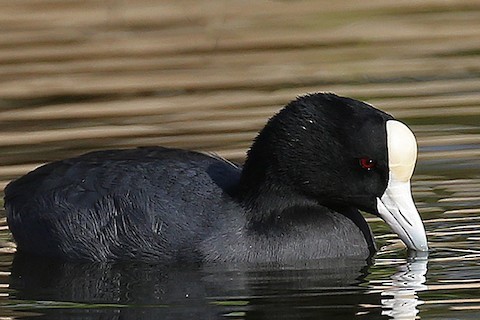
Hawaiian Coot, pale-shielded, showing enormously bulbous frontal shield. (Kealia Pond National Wildlife Refuge, Maui, Hawaii; December 5, 2016.) © Laura Keene

Hawaiian Coot, red-shielded—apparently a young bird with a small shield. (Kealia Pond National Wildlife Refuge, Maui, Hawaii; April 2, 2018.) © Ryan Sanderson
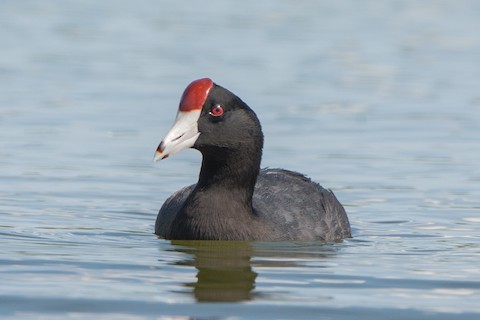
Hawaiian Coot, red-shielded. (Aimakapa Pond, Kaloko-Honokohau National Historical Park, Big Island, Hawaii; November 15, 2018.) © Clive Keen
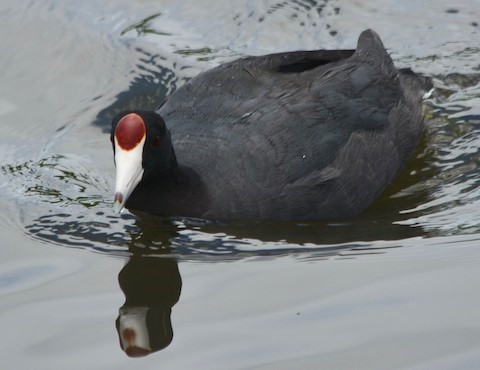
Hawaiian Coot, red-shielded. (Kailua, Oahu, Hawaii; June 17, 2019.) © Tim Johnson
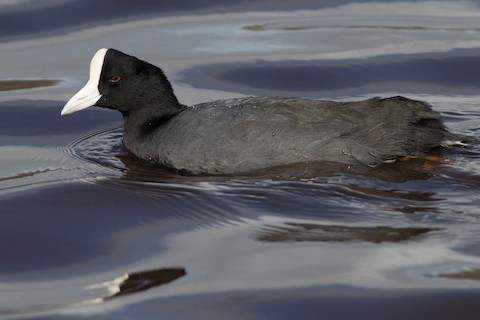
Hawaiian Coot, pale-shielded, showing apparent distortion of head shape. (Kealia Pond National Wildlife Refuge, Maui, Hawaii; December 21, 2017.) © Lucas Bobay

Hawaiian Coot, pale-shielded, showing apparent distortion of head shape. (Aimakapa Pond, Kaloko-Honokohau National Historical Park, Big Island, Hawaii; October 17, 2019.) © Kelly Ballantyne

Hawaiian Coot, red-shielded. (Aimakapa Pond, Kaloko-Honokohau National Historical Park, Big Island, Hawaii; January 14, 2017.) © Sharif Uddin
Immatures are similar to adults, but have somewhat paler, ashier gray plumage and pinkish-gray bills that lack a frontal shield.

Hawaiian Coot, pale-shielded adult with chick. (Kealia Pond National Wildlife Refuge, Maui, Hawaii; June 24, 2017.) © Peter Roberts

Hawaiian Coot, juvenile. (Honouliuli Unit, Pearl Harbor National Wildlife Refuge, Oahu, Hawaii; September 16, 2018.) © Sharif Uddin

Hawaiian Coot, fledgling. (Pouhala Marsh, Oahu, Hawaii; November 21, 2019.) © Eric VanderWerf
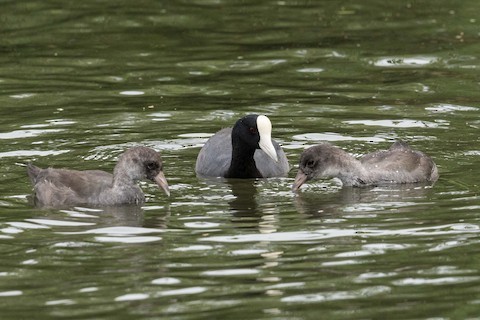
Hawaiian Coot, pale-shielded adult with two fledglings. (Pouhala Marsh, Oahu, Hawaii; November 21, 2019.) © Eric VanderWerf

Hawaiian Coot, juvenile. (Kawaiele State Waterbird Sanctuary, Kauai, Hawaii; July 25, 2018.) © Anthony Vicciarelli
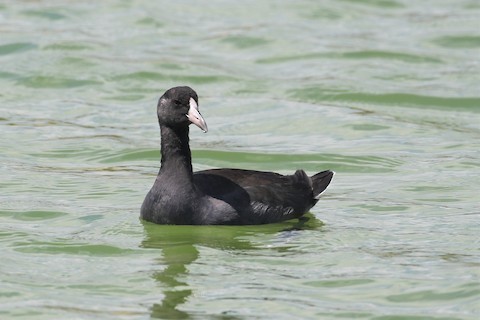
Hawaiian Coot, juvenile. (Kawaiele State Waterbird Sanctuary, Kauai, Hawaii; July 25, 2018.) © Anthony Vicciarelli
Cf. American Coot. American Coot probably strays to Hawaii from time to time and it seems likely that Hawaiian Coot strays to the mainland once in a while, but such vagrancy apparently remains conjectural. Until 1993, the two were formally classified as conspecific, and they are generally similar, with identical plumage.
The main difference is in their frontal shields. The red-shielded morph of Hawaiian is easily recognized by its much-larger frontal shield. However, this does not apply to the white-shielded morph because American Coots vary and some have exaggerated, pale, bulbous shields—similar enough to the white-shielded morph of Hawaiian that they may be indistinguishable. (Large, pale, bulbous shields are typical of the “Caribbean Coot,” but also occur in small numbers in non-Caribbean populations.)
Cf. Eurasian Coot. Eurasian and Hawaiian Coots could occur as vagrants in one another’s ranges. Hawaiian Coots with white shields are very similar to Eurasian Coots except that the adult Hawaiian’s shield grows larger than the Eurasian’s. They also differ in their undertail coverts: narrowly fringed with white on Hawaiian versus all-dark on Eurasian.
Notes
Monotypic species. Formerly considered a subspecies of American Coot (F. americana).
IUCN Red List Status: Vulnerable.
References
BirdLife International. 2016. Fulica alai. The IUCN Red List of Threatened Species 2016: e.T22692920A93374177. https://dx.doi.org/10.2305/IUCN.UK.2016-3.RLTS.T22692920A93374177.en. (Accessed May 28, 2020.)
eBird. 2020. eBird: An online database of bird distribution and abundance. Cornell Lab of Ornithology, Ithaca, N.Y. http://www.ebird.org. (Accessed May 28, 2020.)
Pratt, H.D. 1993. Enjoying Birds in Hawaii: A Birdfinding Guide to the Fiftieth State (Second Edition). Mutual Publishing, Honolulu, Hawaii.
Pyle, R.L., and P. Pyle. 2017. The Birds of the Hawaiian Islands: Occurrence, History, Distribution, and Status. Version 2 (January 1, 2017). http://hbs.bishopmuseum.org/birds/rlp-monograph/. B.P. Bishop Museum, Honolulu, Hawaii.
Taylor, B., and B. van Perlo. 1998. Rails: A Guide to the Rails, Crakes, Gallinules, and Coots of the World. Yale University Press.
